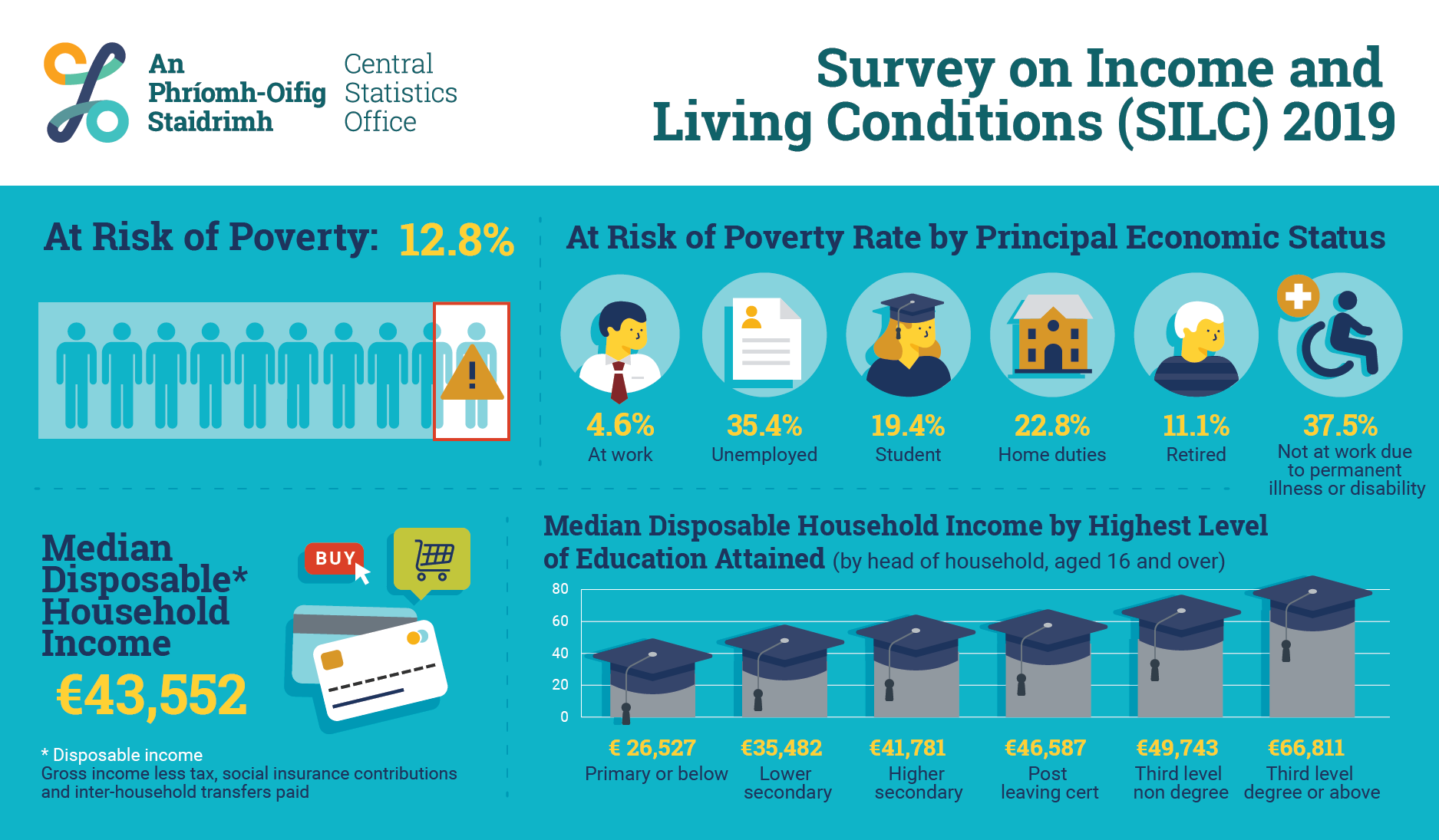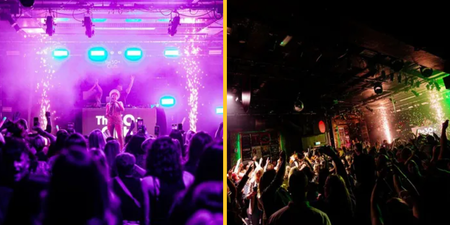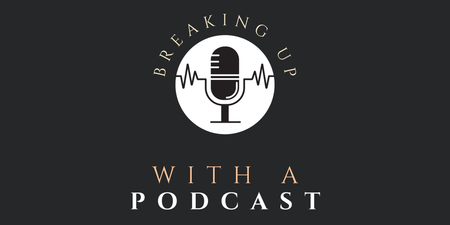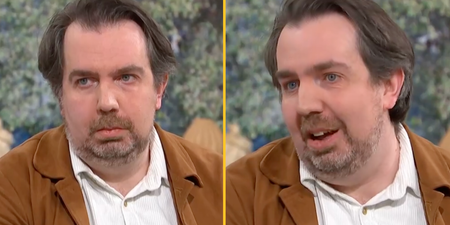Where the head of household had a third level degree or above, the figure rose to €66,811.
The median annual household disposable income in Ireland was €43,552 last year, according to figures published by the Central Statistics Office (CSO) on Tuesday.
The figure is nearly €700 greater than the equivalent figure for 2018 and is one of a number of headline findings from the Survey on Income and Living Conditions 2019, which also highlights a number of key indicators about the number of people living in poverty in Ireland.
The figure for median annual household income is calculated by the gross income of a household, less total tax, social insurance contributions and inter-household transfers paid.
The median figure is often considered to be more representative than the mean, or average figure, which can be more easily skewed by exceptionally high figures. In this case, for example, the average disposable income in Ireland in 2019 was €53,118.
The CSO has provided an explainer on the difference between median and mean, in this case in relation to house prices, below:
Clip via CSO Ireland
Households with three or more persons at work, the survey found, had the highest nominal median household disposable income (€95,613), compared with €24,173 for households with no one at work.
Household disposable income also increased as the highest level of education attained by the head of household increased.
Where the head of household had an educational attainment of primary level or below, for example, the nominal median household disposable income was €26,527, compared with €66,811 for those with a third level degree or above.
The survey also revealed the mean and median equivalised household income in Ireland, a measure that takes account of the differences in household size and composition.
The median equivalised income increased 4.8% from €22,872 in 2018 to €23,979 in 2019, while the mean figure increased by 4.4% from €26,766 in 2018 to €27,941.

Figures in the survey also revealed that approximately one in eight people in Ireland (12.8%) were considered at risk of poverty in 2019, meaning their equivalised income was less than 60% of the national median equivalised income.
Those most at risk of poverty were individuals who were not at work due to illness or disability (37.5%) and those who were unemployed (35.4%). 4.6% of people that described their economic status as ‘at work’ were considered at risk of poverty.
Just over one in five people (5.5%), meanwhile, were defined as being both at risk of poverty and also experiencing enforced deprivation (consistent poverty rate) in 2019.
Individuals living in households where there was one adult and one or more children aged under 18 had the highest consistent poverty rate at 17.1%, while the rate was lowest for individuals living in households composed of two or more adults, with at least one aged 65 or over, and no children (1%).
One in seven (13.5%) of those living in rented accommodation were defined as living in consistent poverty, compared with one in 50 (1.8%) of those living in owner-occupied accommodation.
The survey in full can be read here.
LISTEN: You Must Be Jokin’ with Aideen McQueen – Faith healers, Coolock craic and Gigging as Gaeilge


















































